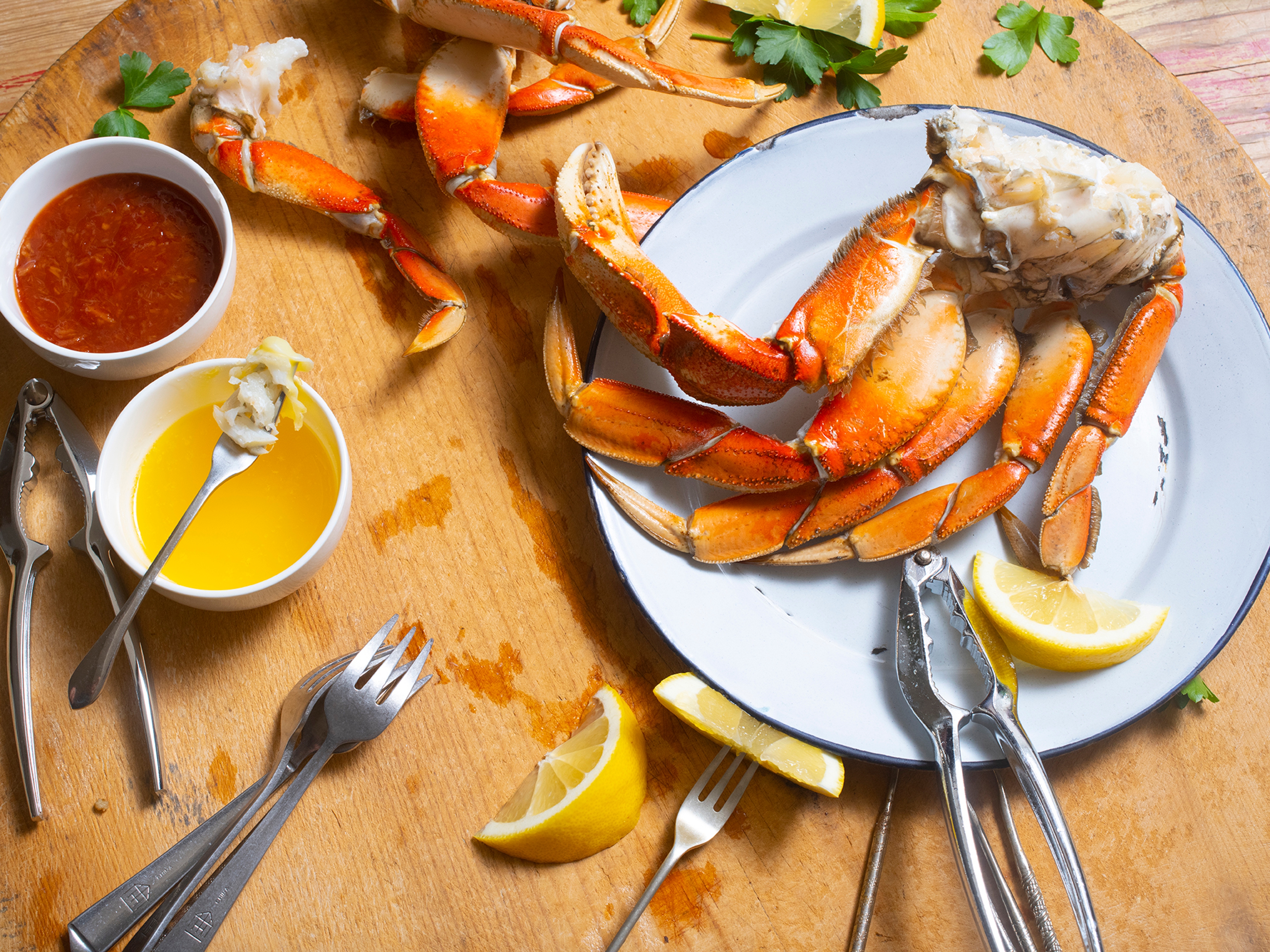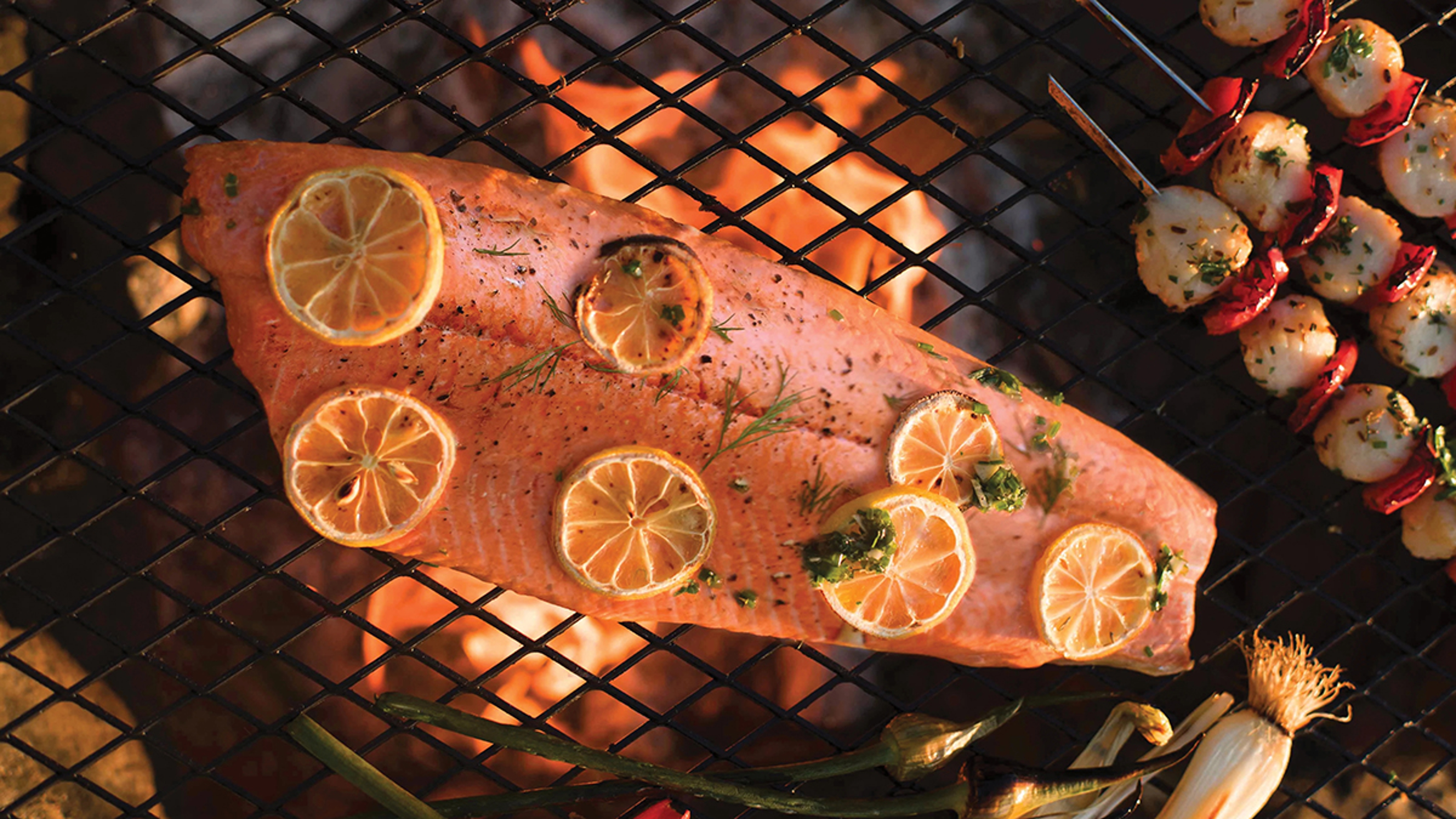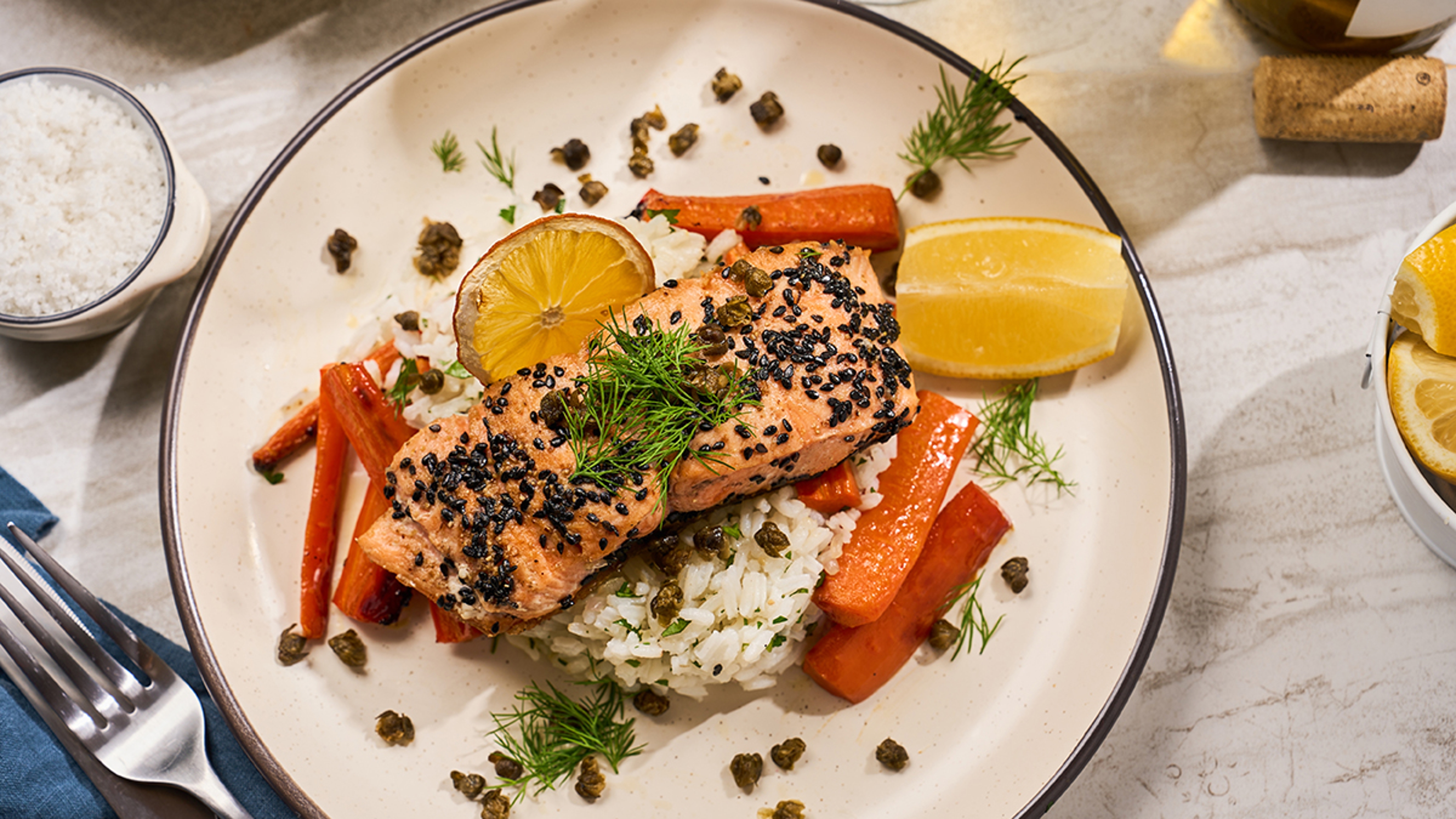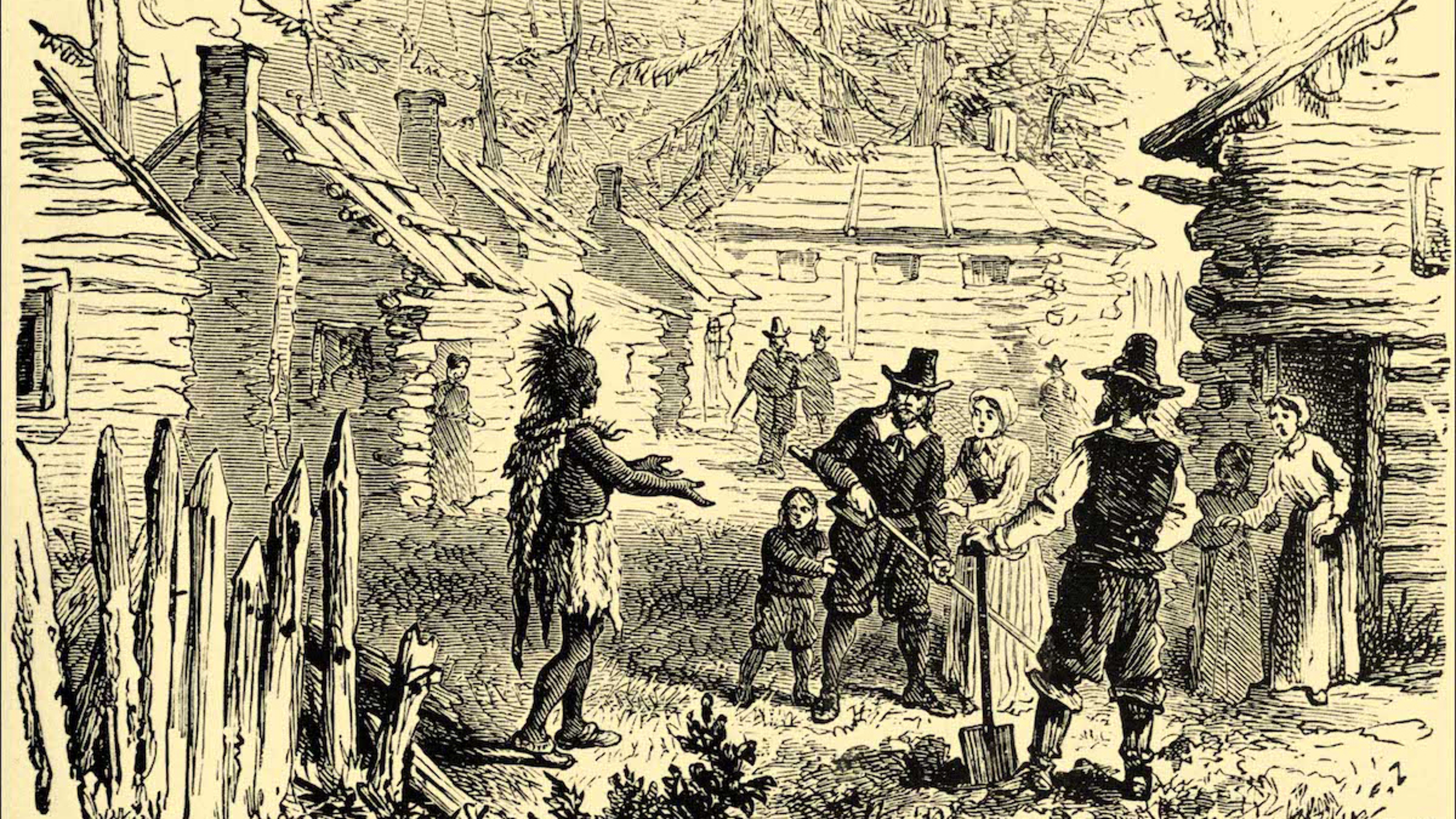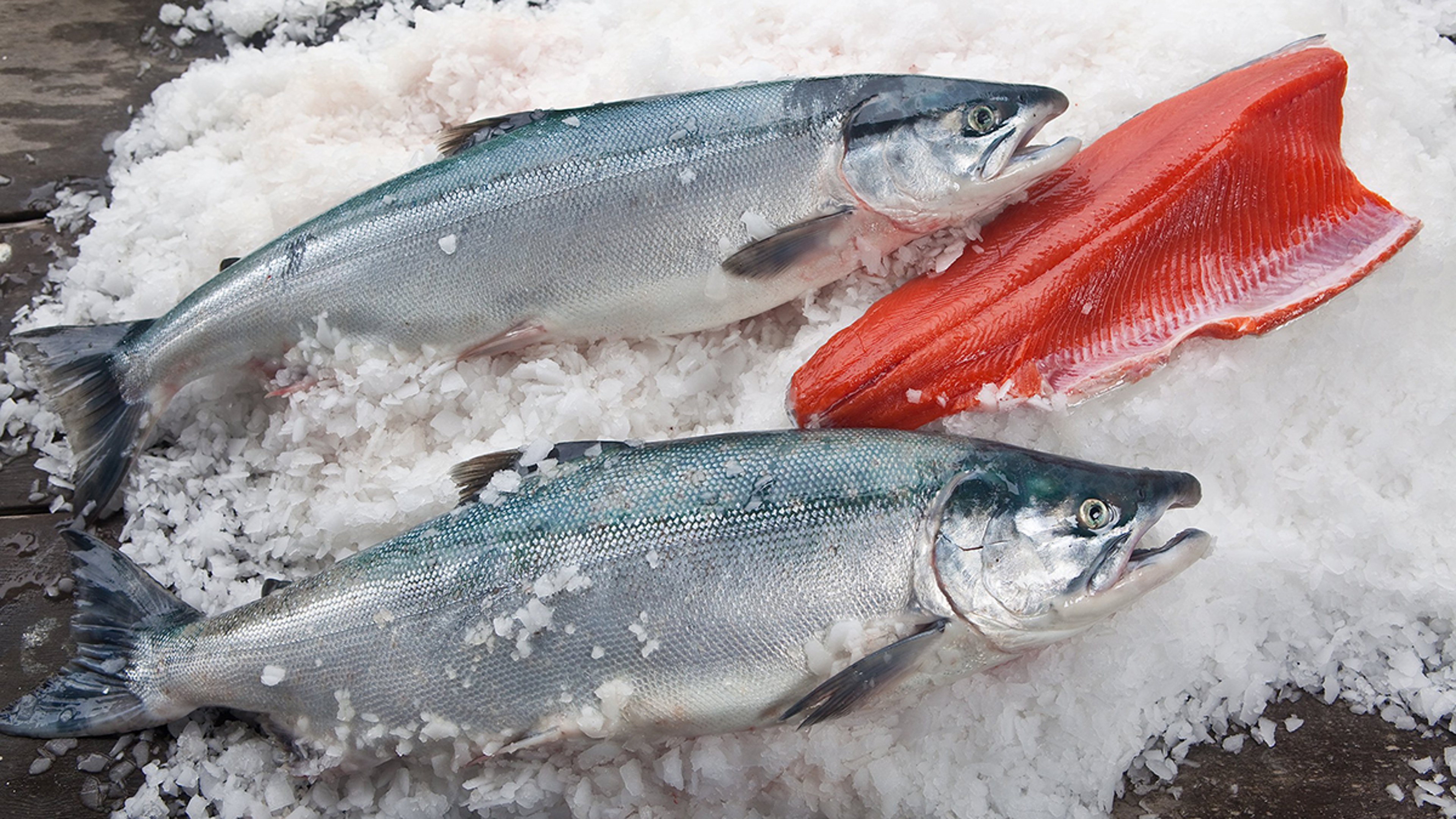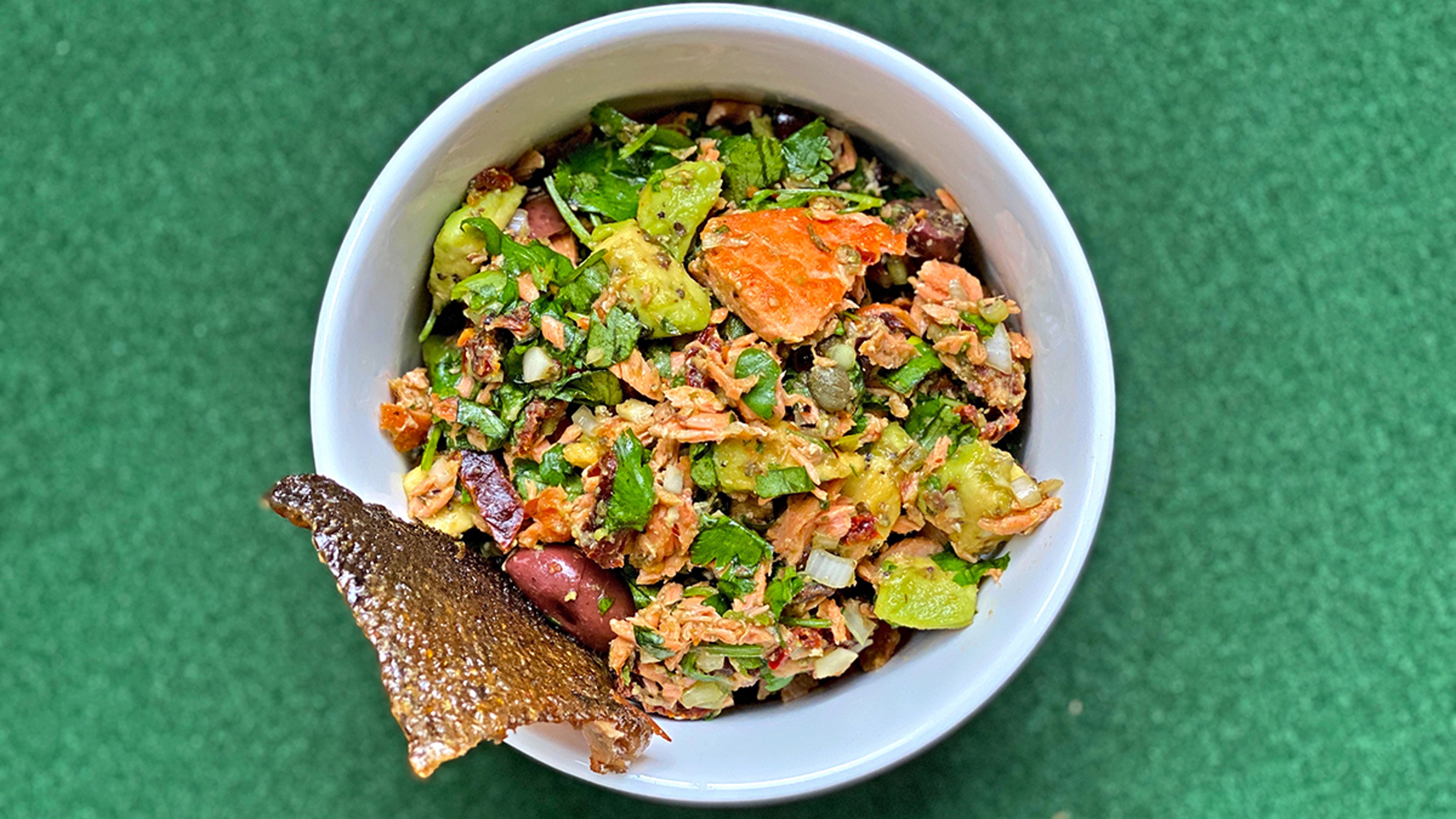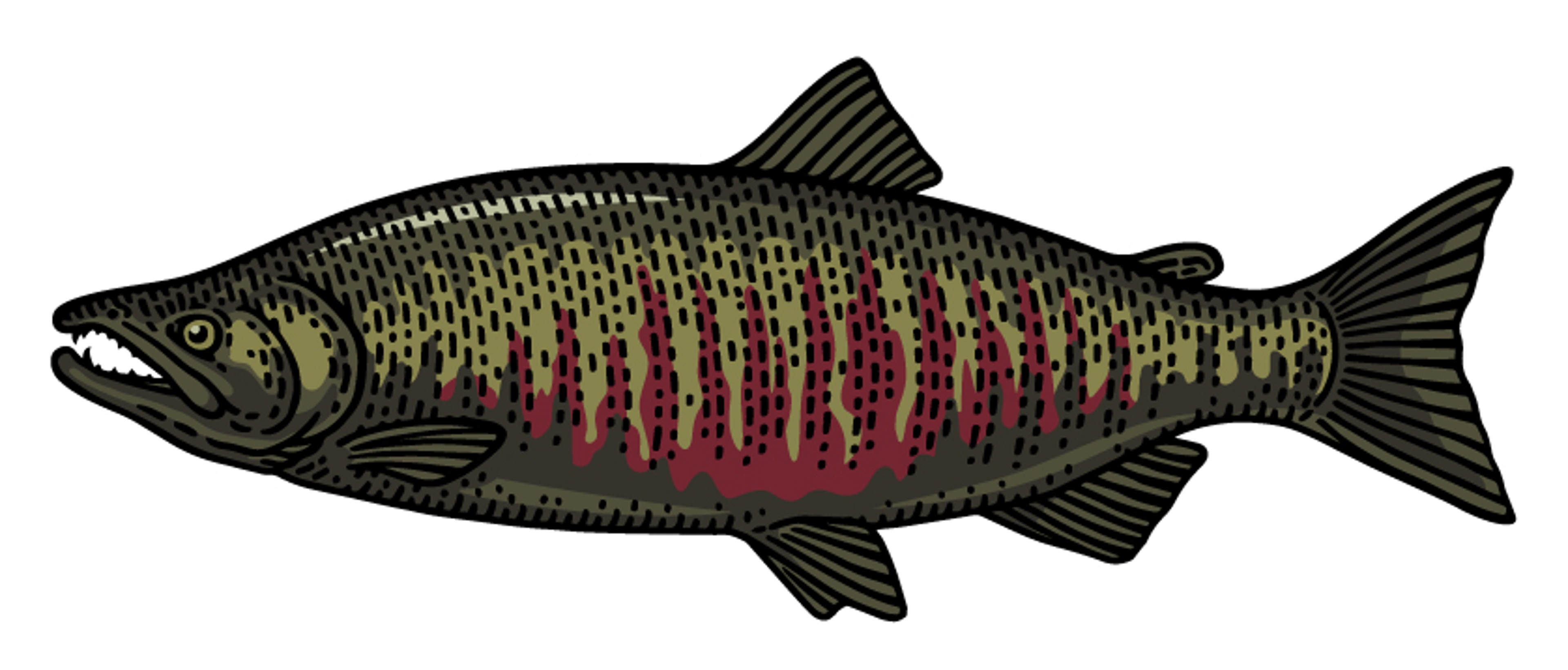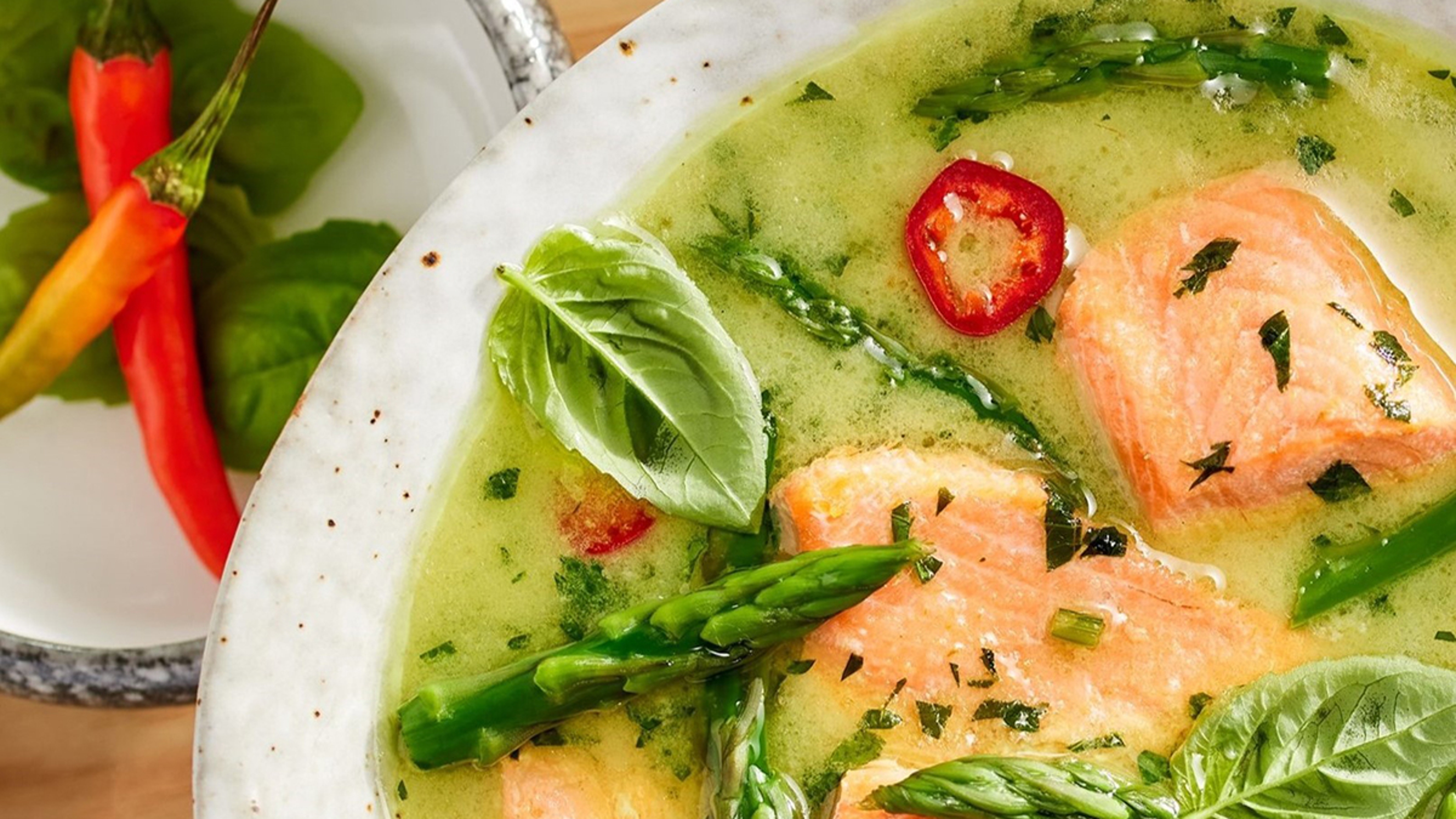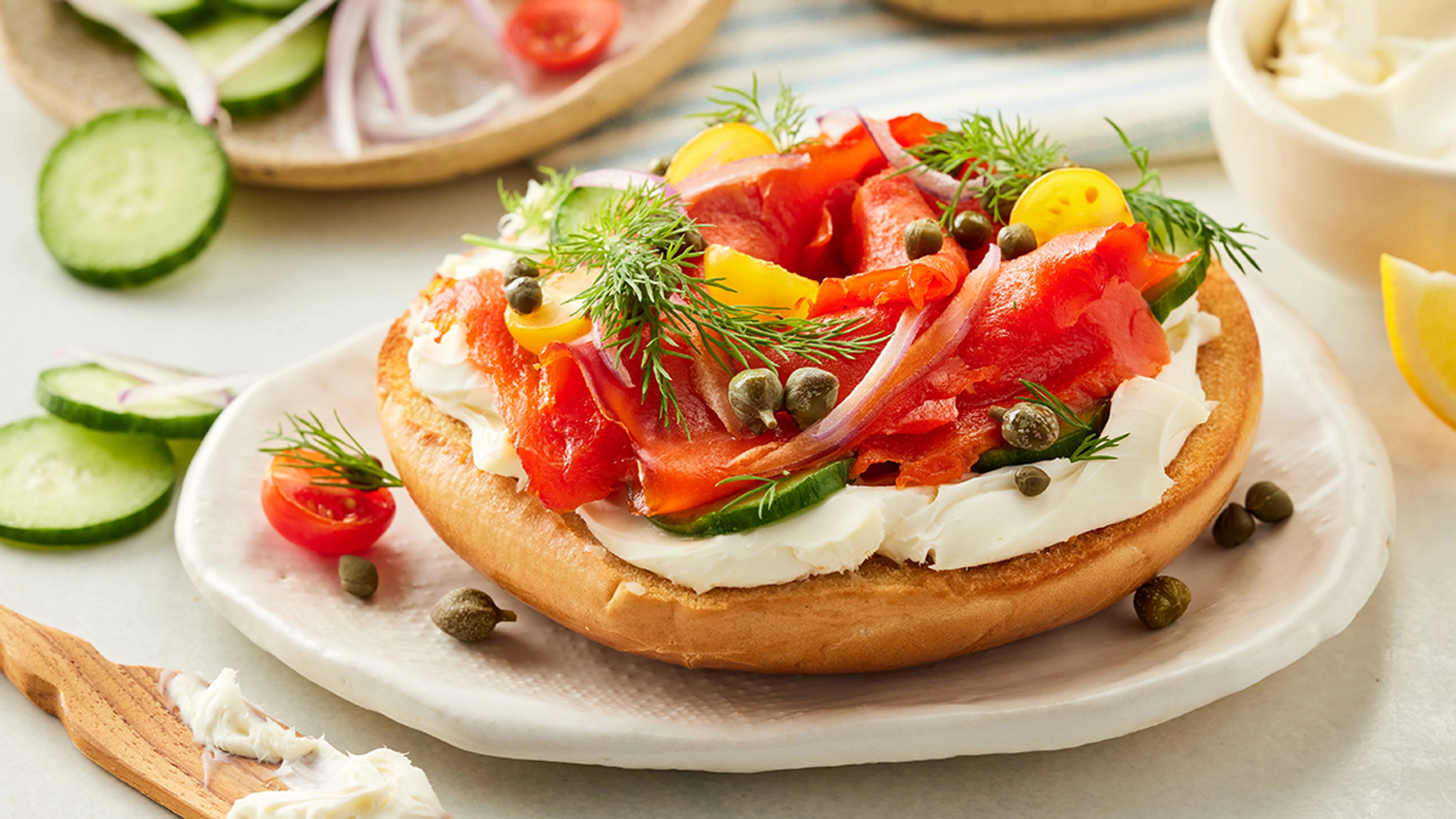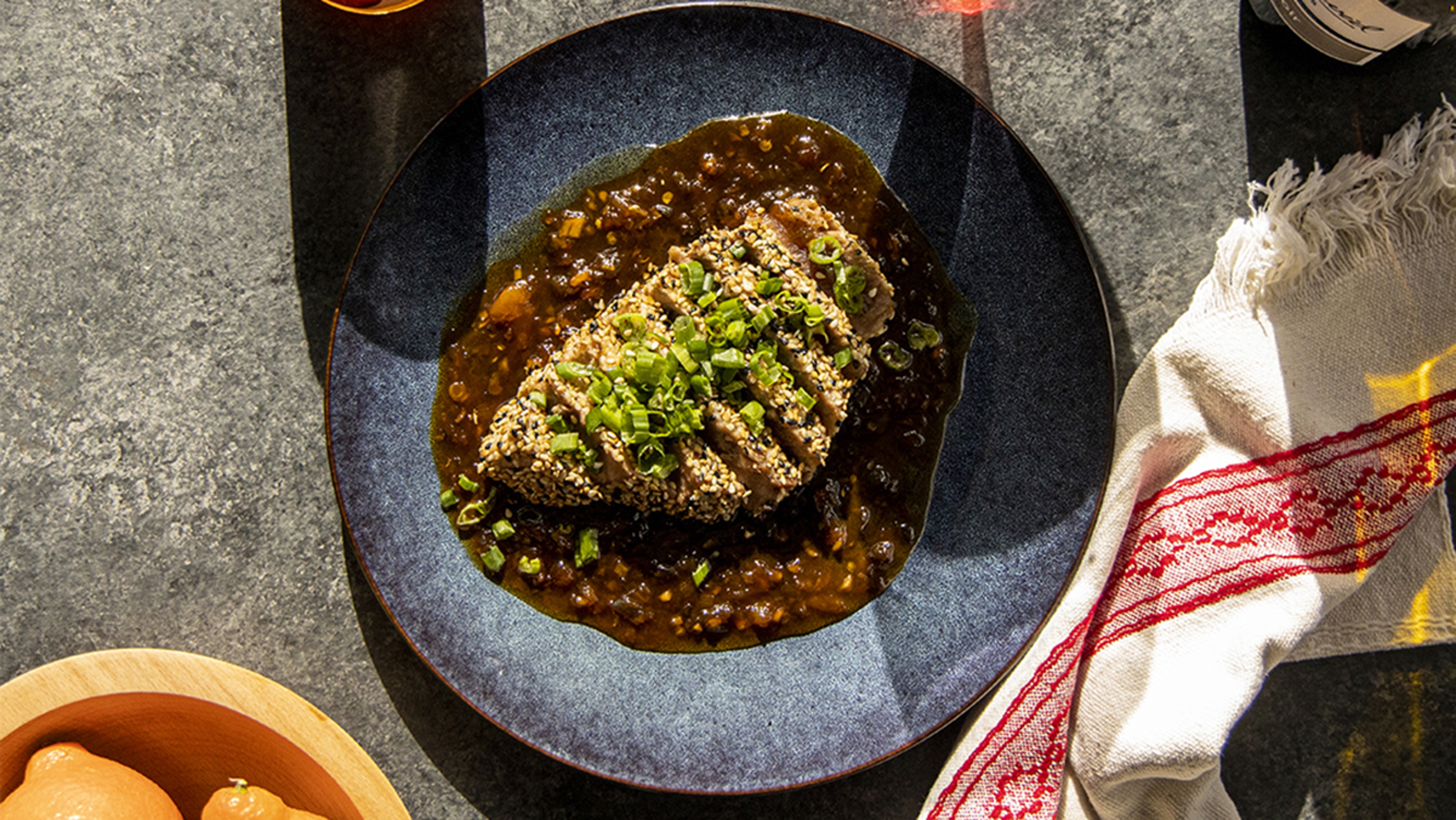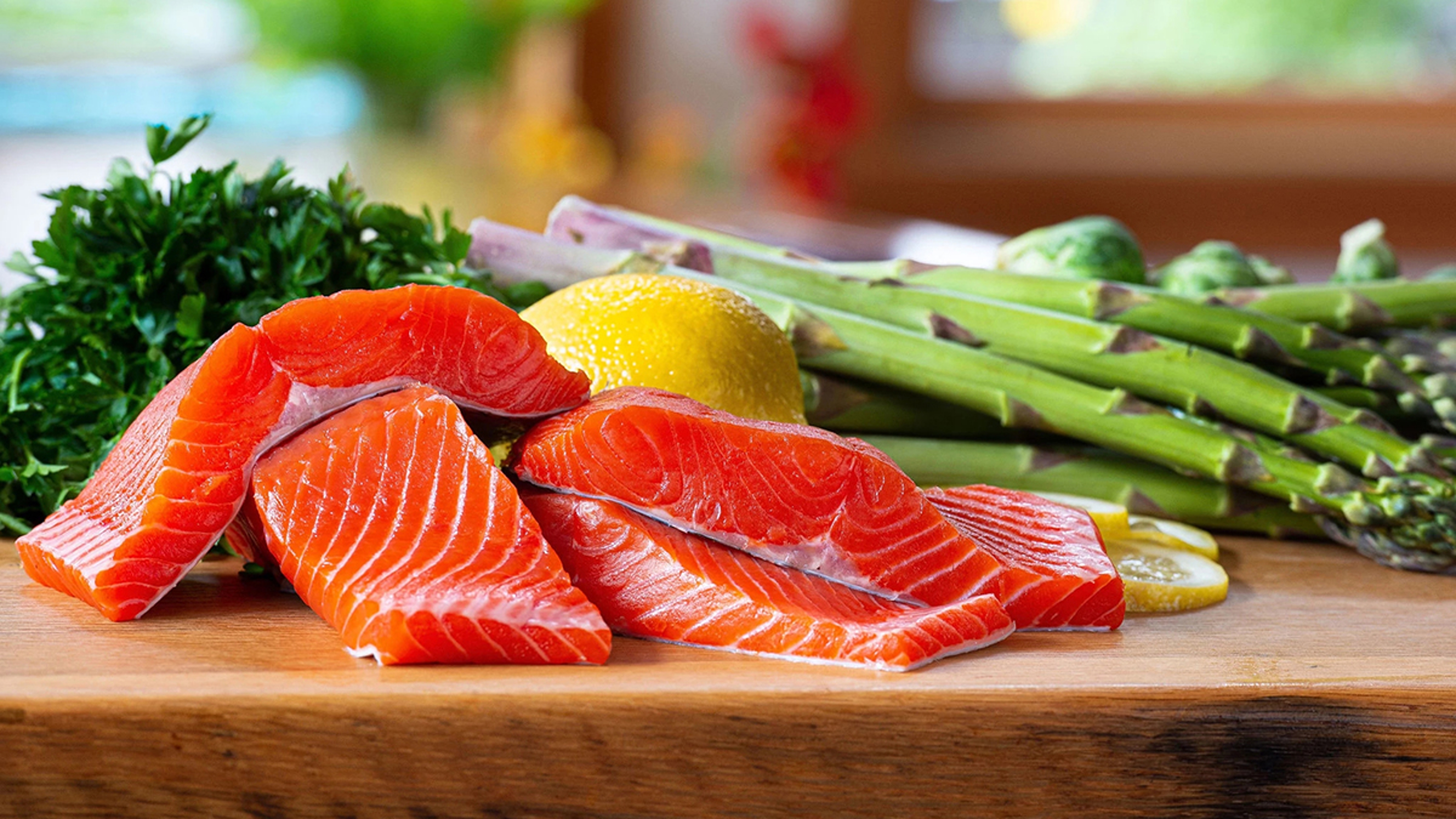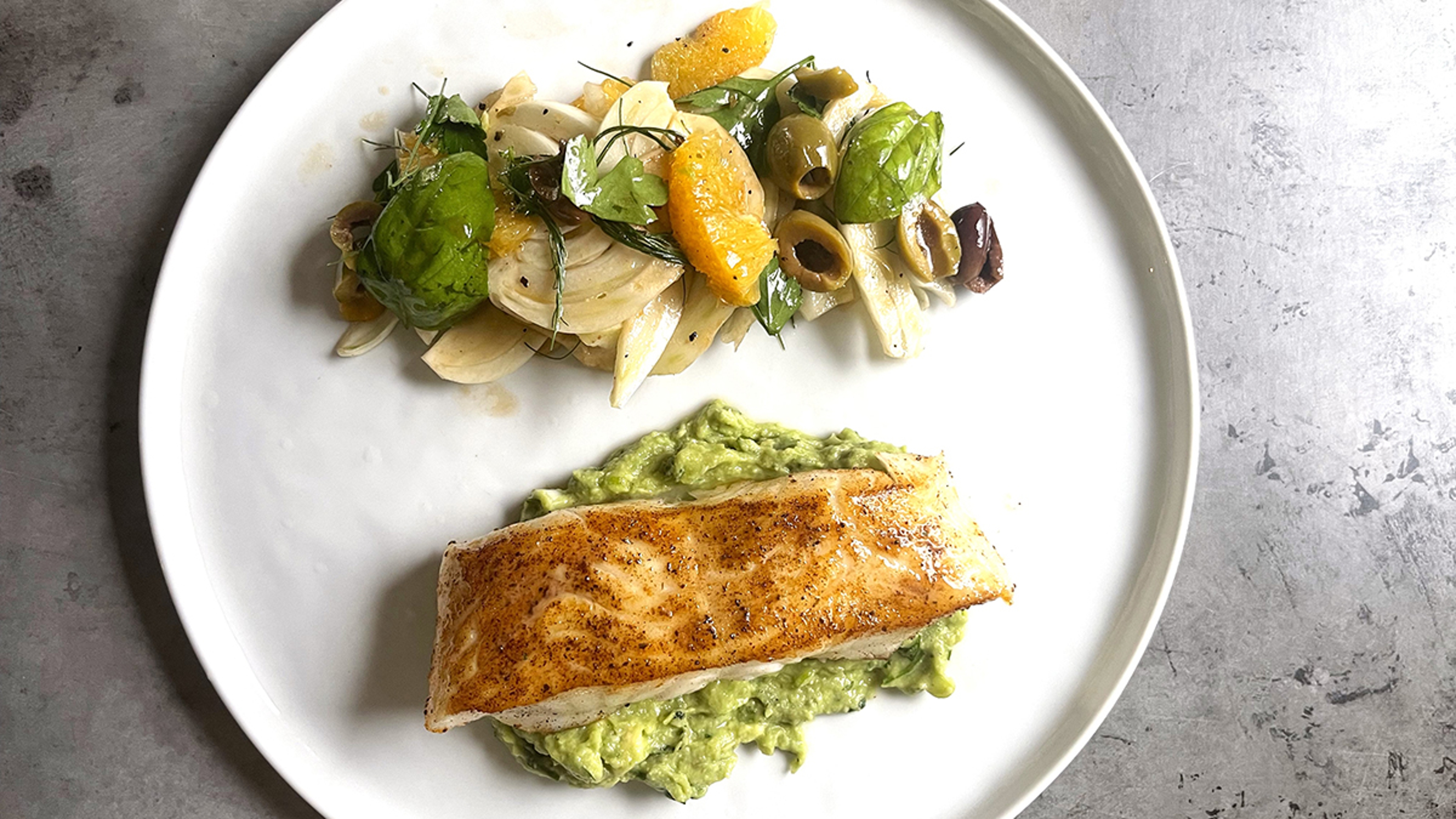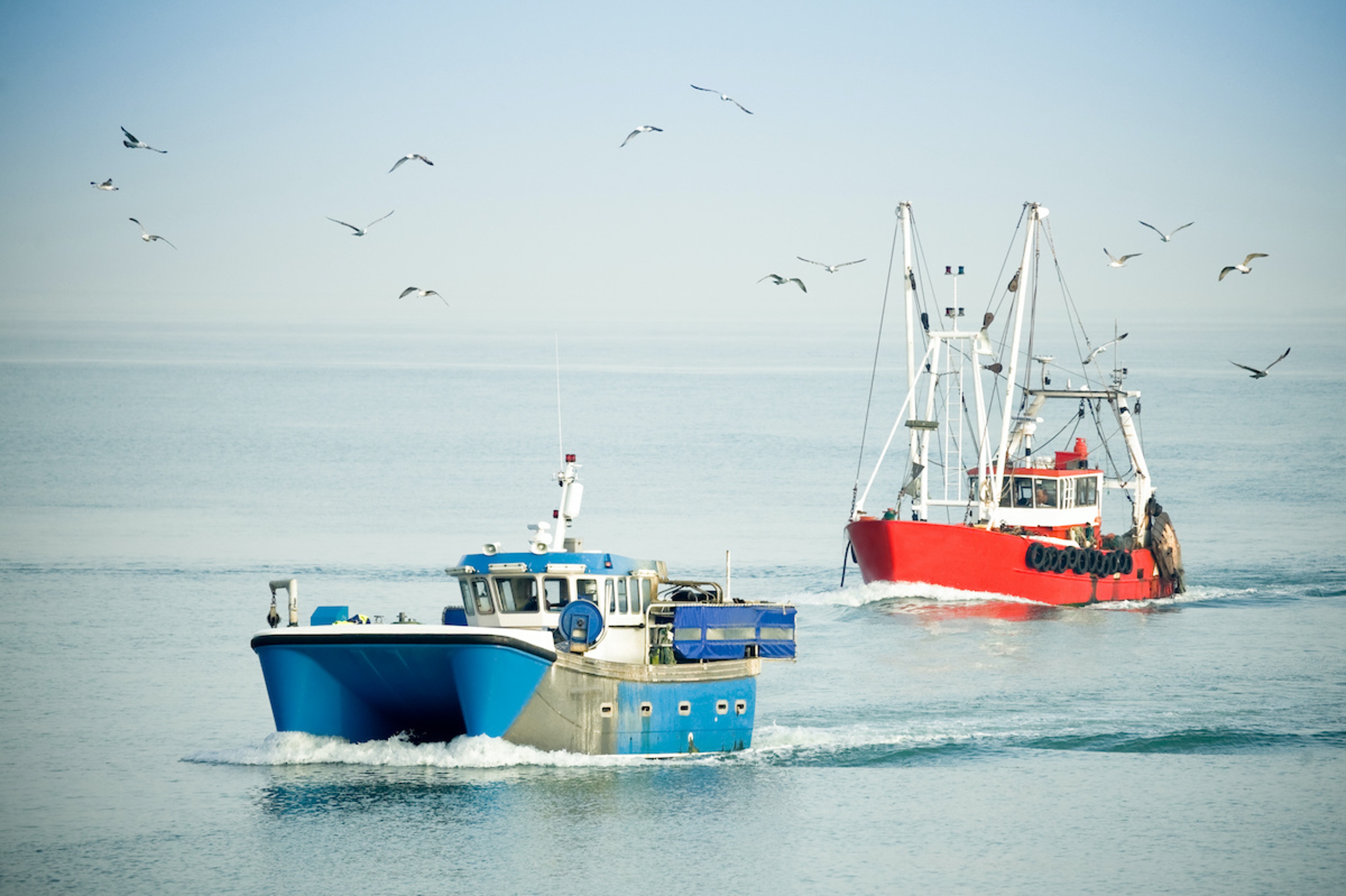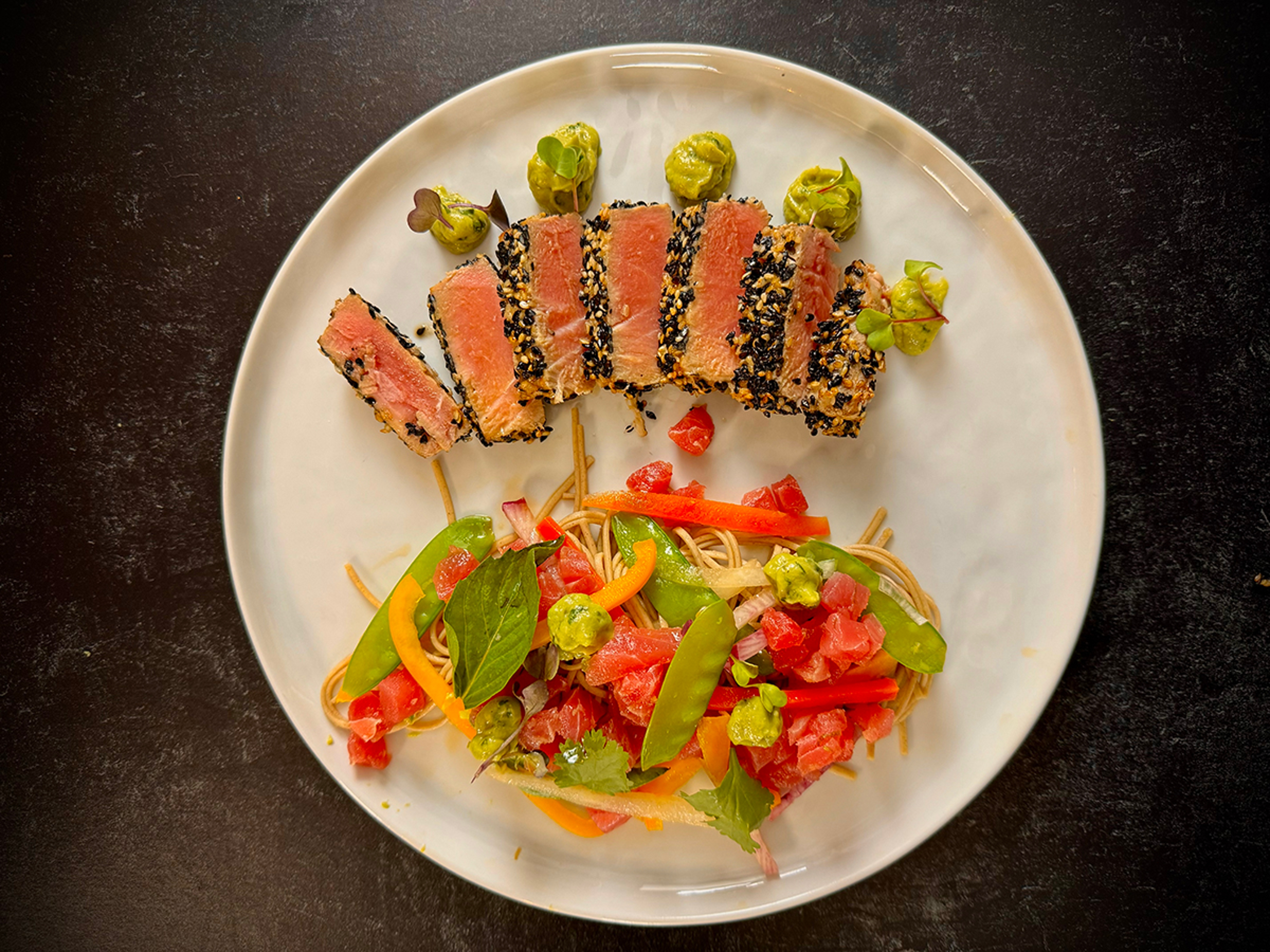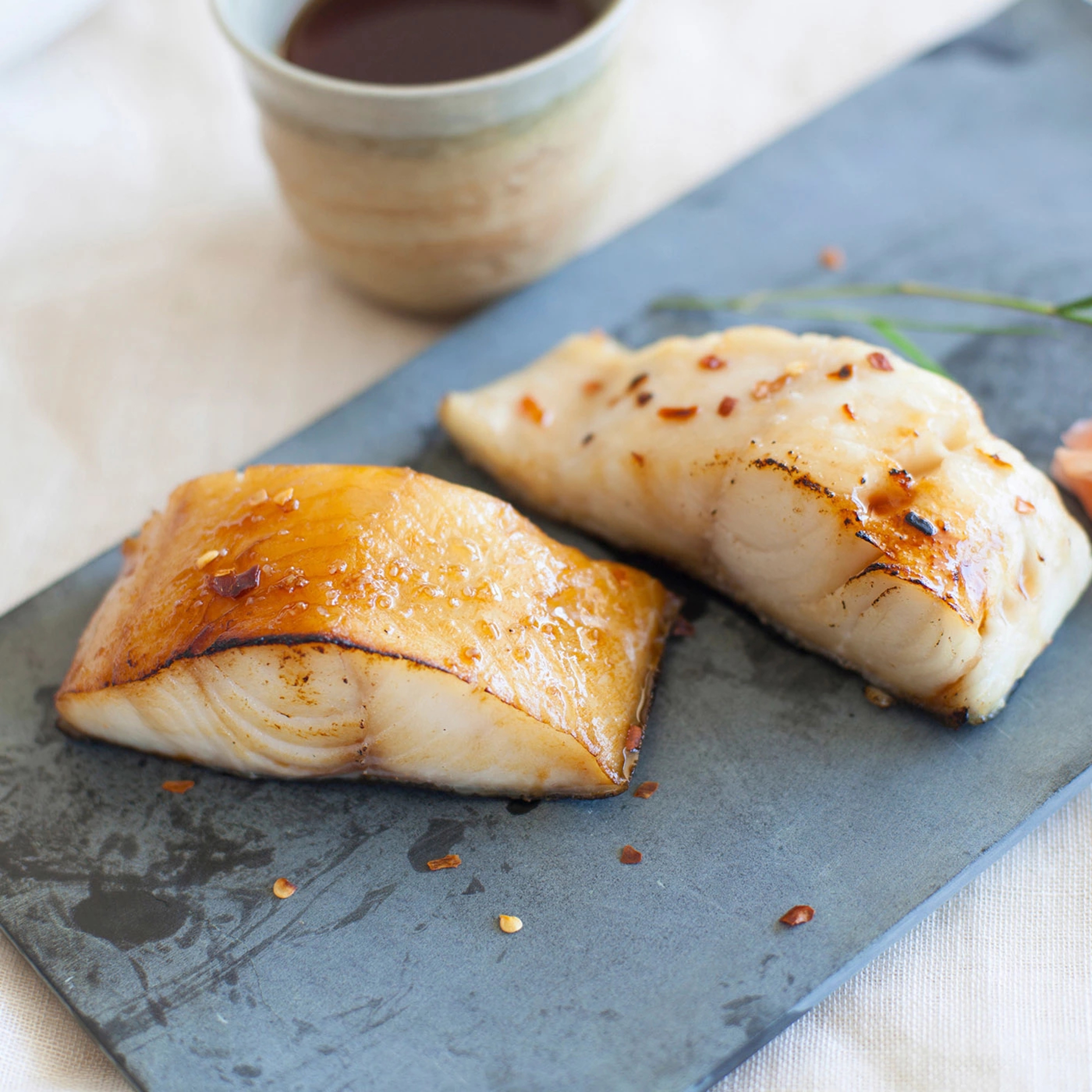Norm Pillen throws around words like “art” and “mystique” when he talks about catching one of his favorite fish, king salmon. The president of Seafood Producers Cooperative (SPC) has been troll fishing for kings for 35 years, since he was a teenager. He’s seen a lot of changes to the fishing industry in that time, but one constant is the resilience and appeal of the king salmon.
“They’re big. They’re fighters. They’re good to eat,” Pillen says. “All of that adds up to an amazing, amazing fish.”
King salmon, also known as Chinook, earn their regal name due to their impressive size. As the largest of the five types of Pacific salmon, they are highly prized for their rich flavor, meaty texture, and exceptional nutritional benefits, including a high oil content and abundant omega-3 fatty acids. They are also the rarest species of Pacific salmon and require more effort to catch than many other types of wild seafood, lending them the mystical qualities to which Pillen alludes.

Catch ‘em if you can
Like other Pacific salmon, kings spawn in Alaska tributaries and rivers — including the glacier-fed Copper River, famed for its seasonal king catch. SPC’s 165-member fleet fishes for kings further to the southeast, from the Dixon Entrance (a strait near the Alaska-Canada border) up to Yakutat, a range of about 450 miles in the Gulf of Alaska.
The king season here is short. Because they aren’t as plentiful as coho or sockeye, kings are managed extremely carefully by the Alaska Department of Fish & Game and the Pacific Salmon Treaty and Commission, a U.S.-Canada organization (more on the conservation efforts below). Pillen, who notes that the king season used to last “all summer long,” says his troll fleet has summer and winter quotas, catching about 150,000 kings during a short, weeklong season in July, and another 45,000 or so in October.
The SPC vessels, and most king salmon harvesters, are trollers. They generally catch one fish at a time, as opposed to trawlers, which scoop up many tons of fish in sock-like nets. But trolling is harder than it sounds.
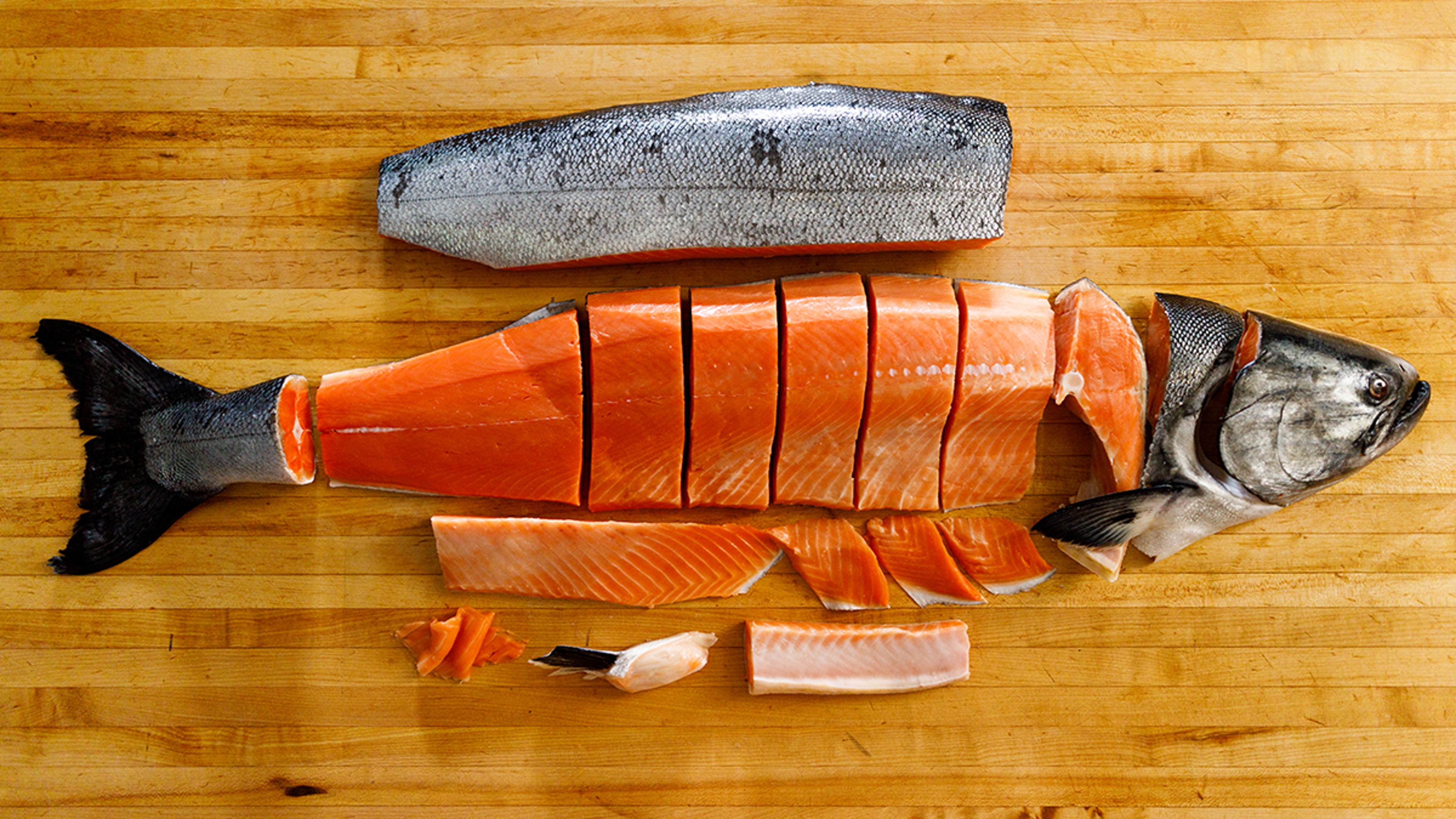
The art of king salmon fishing
Catching king salmon sounds simultaneously challenging, exhilarating, and exhausting. The lines are baited with a lure that could be a “piece of herring or an artificial squid, a spoon or a plug,” Pillen explains, sounding like he’s reciting a strange nursery rhyme.
The lures are placed on leaders, parts of longer fishing lines that snap off from the main line when a fish is caught. “You have the leader in your hands, and you’re pulling it in, and the fish are fighting you,” Pillen says. “You’re pulling, they’re pulling.”
Once the fish are brought alongside the boat, they’re hauled aboard and swiftly stunned to prevent stress and maintain the delicate texture of the meat. Afterward, the fish are bled, cleaned, and rinsed before being stored on ice to lock in freshness. They are then transported to SPC’s processing plant in Sitka, Alaska — accessible only by boat — where their journey from sea to table continues.
To catch king salmon, though the same process compared to other species, is relatively effortlessly, Pillen says, noting that their size makes them easier to identify when they bite on the hook – and boy, do they pull hard. “It’s a bigger fish, and it’s a fighter. It gets your blood pumping!”
Use it and sustain it… or lose it
Alaskan fisheries are the most regulated in the world, and Pillen monitors SPC’s fleet closely. Although his role as president keeps him busy, he takes extra time during king salmon season to check in with connections at Fish & Game and other organizations, as well as with his own members, to issue a daily fleet report. The SPC troll fleet actively participates in reporting its catch to ensure adherence to quotas, which have been “greatly reduced,” according to Pillen.
The commitment to sustainability has pitfalls for the troll permit holders. Pillen notes that some fishermen make up 50% of their annual earnings with king salmon, “and now they get maybe a week to catch those fish. If you’re not in the right spot, if the weather’s not good, and your boat can’t get out, you could lose a big chunk of your season.”
Farmed salmon vs. wild salmon
If wild king salmon is declining, why don’t we as consumers simply switch to eating farmed salmon? It’s ironic, but the conventional wisdom is that farmed salmon is contributing to declining wild salmon populations.
How?
The promise of farmed salmon is that the fish can be spawned in controlled environments, but the reality is that feeding these fish requires vast resources. “They’re farming the ocean,” Pillen says of the aquaculture companies behind farmed salmon and other species. To create the feed for the farmed fish, “millions of tons” of plankton, sardines, herring, and other parts of the wild seafood food chain are essentially being ground up and turned into pellets to feed farmed fish — and hurting wild fish stocks in the process.
Ironically, this is to create an inferior product. As acclaimed Seattle chef Renee Erickson writes in a recent cookbook, “Farmed salmon is gross (flabby in taste, and it pollutes the ocean).”
Wild seafood, such as SPC’s king salmon, on the other hand, is exquisite. Prepared with olive oil, salt, and lemon pepper, it can be grilled, sauteed, or baked. Its high oil content makes it almost impossible to overcook and dry out. And that’s not to mention the benefits of eating it, from lowering cholesterol to improving heart health.
MAKE THIS: Seared King Salmon With Capers & Dill
For his part, Pillen says that the flavor and texture of king salmon set it apart. His go-to technique is to season a fillet, place a piece of foil over a hot grill, add some oil to prevent the fish from sticking, and grill the salmon skin-side down for 5 to 10 minutes depending on thickness, taking it off the heat “as soon as it’s done.”
The king has spoken.











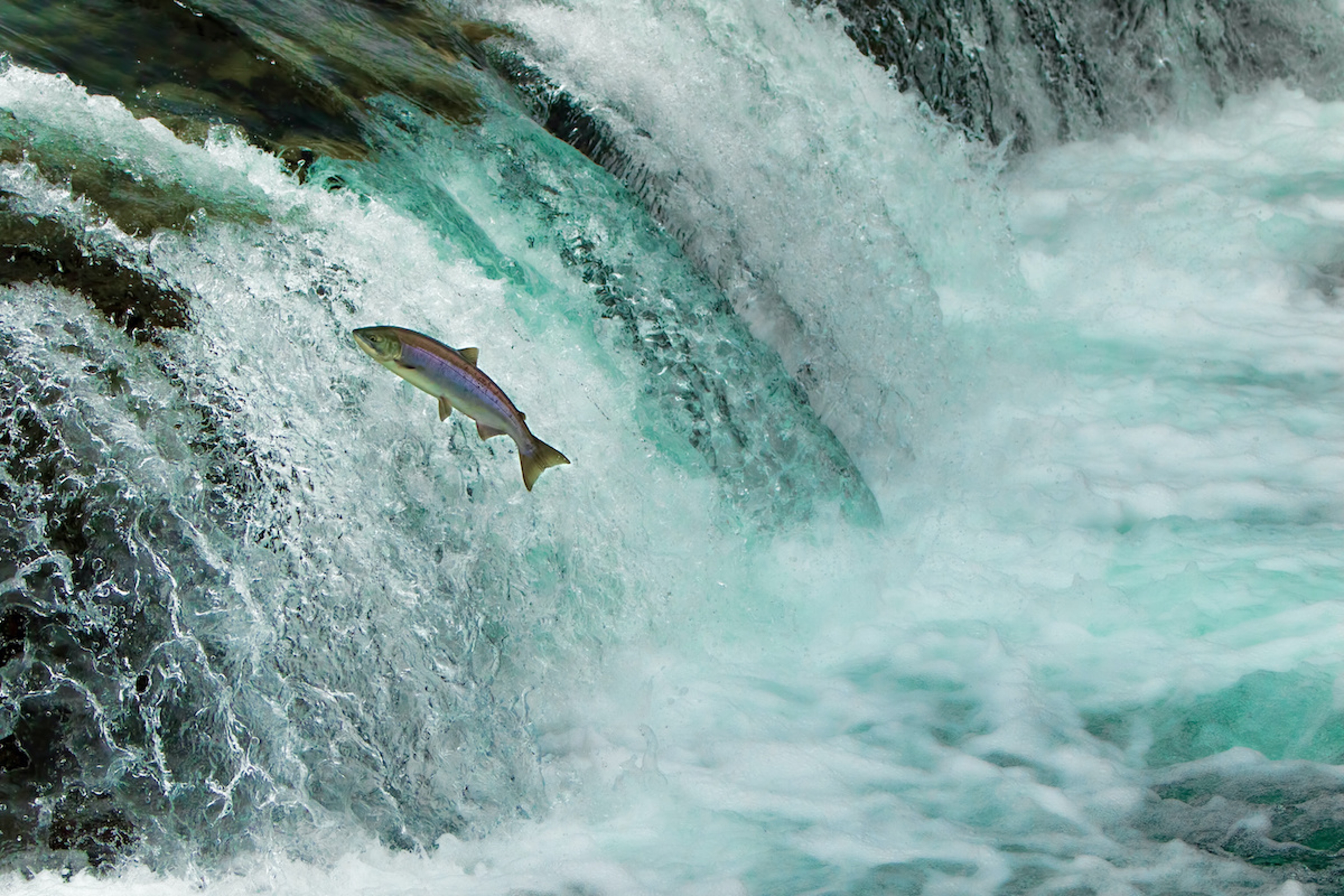



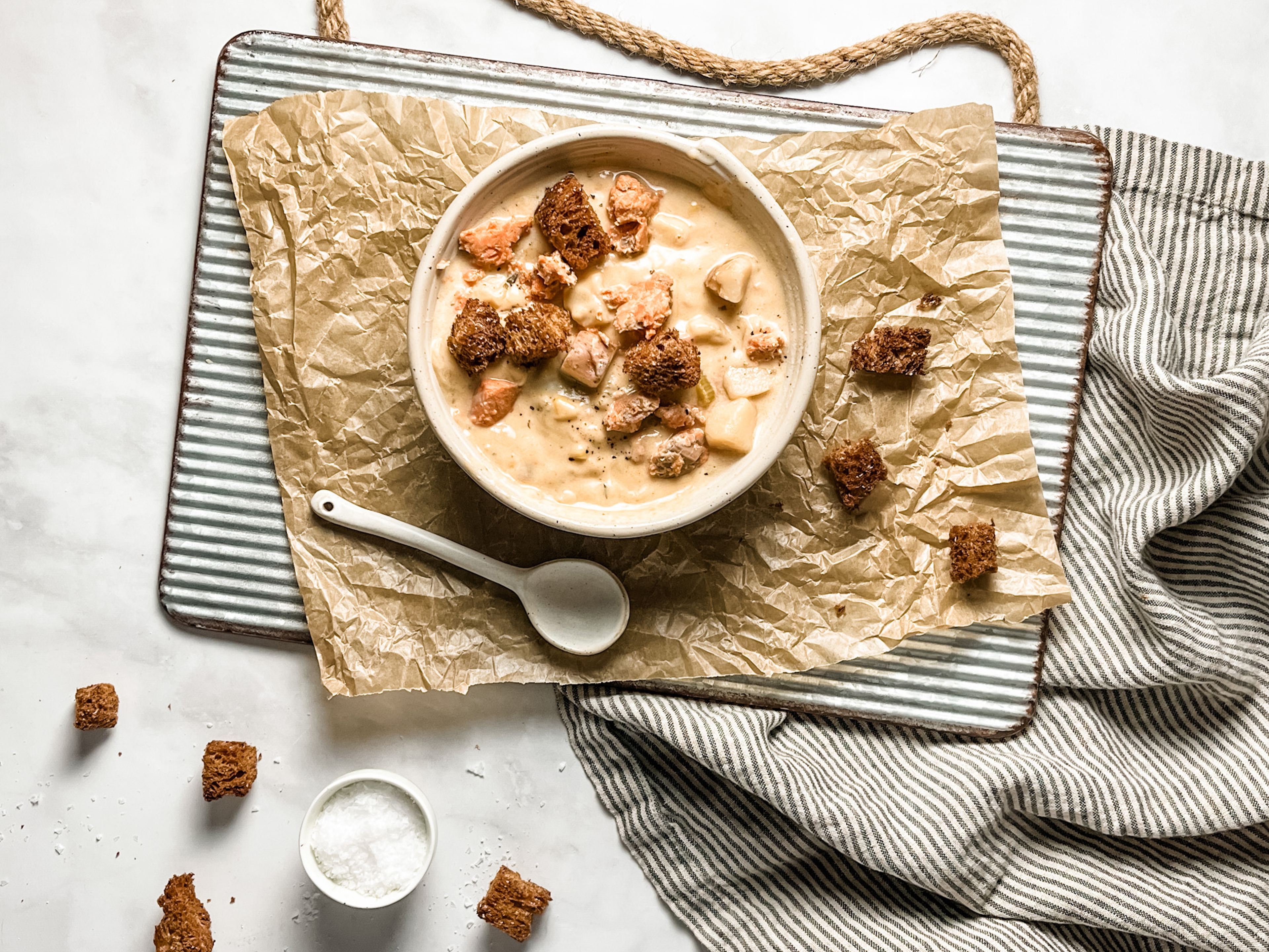




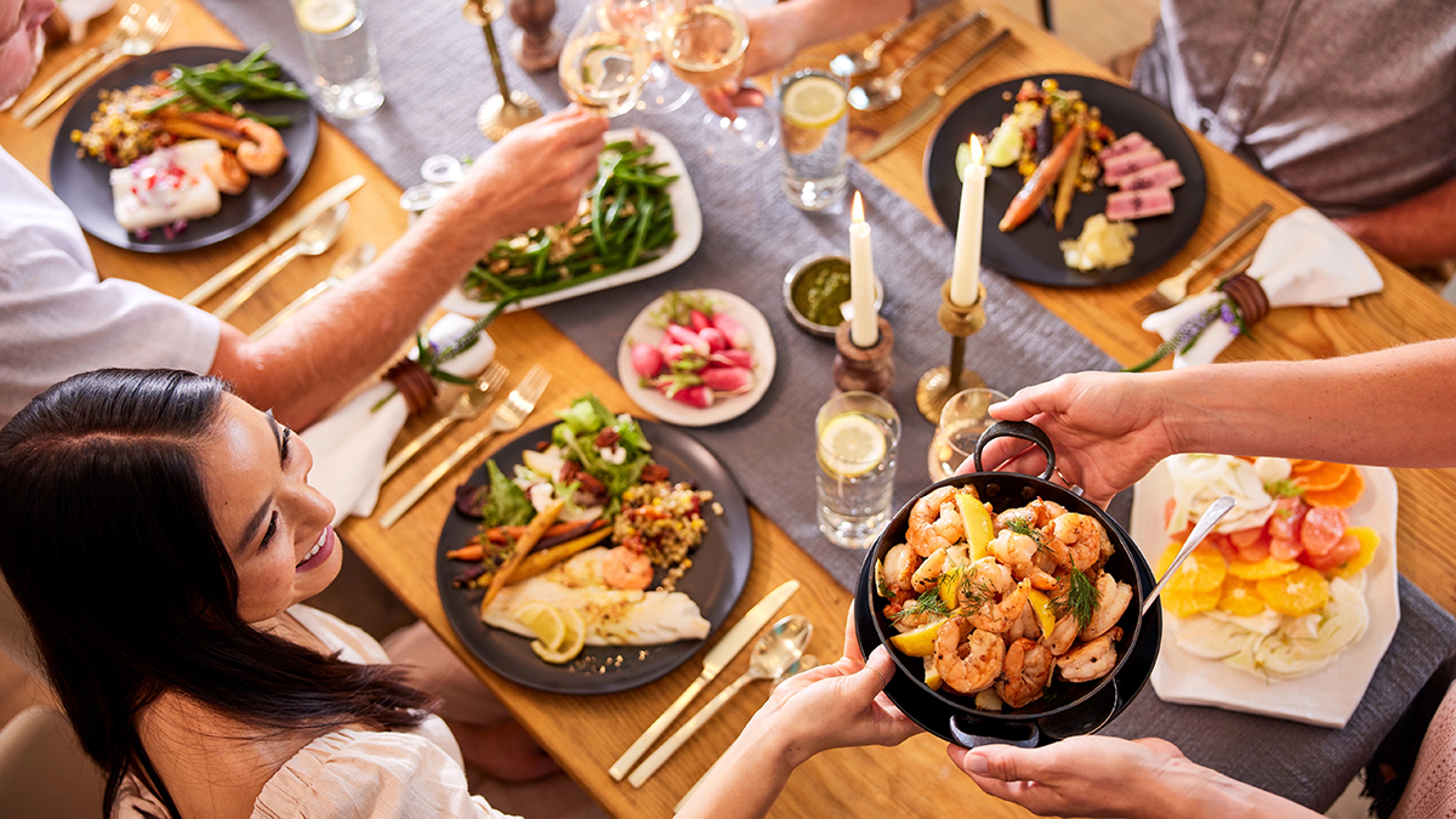
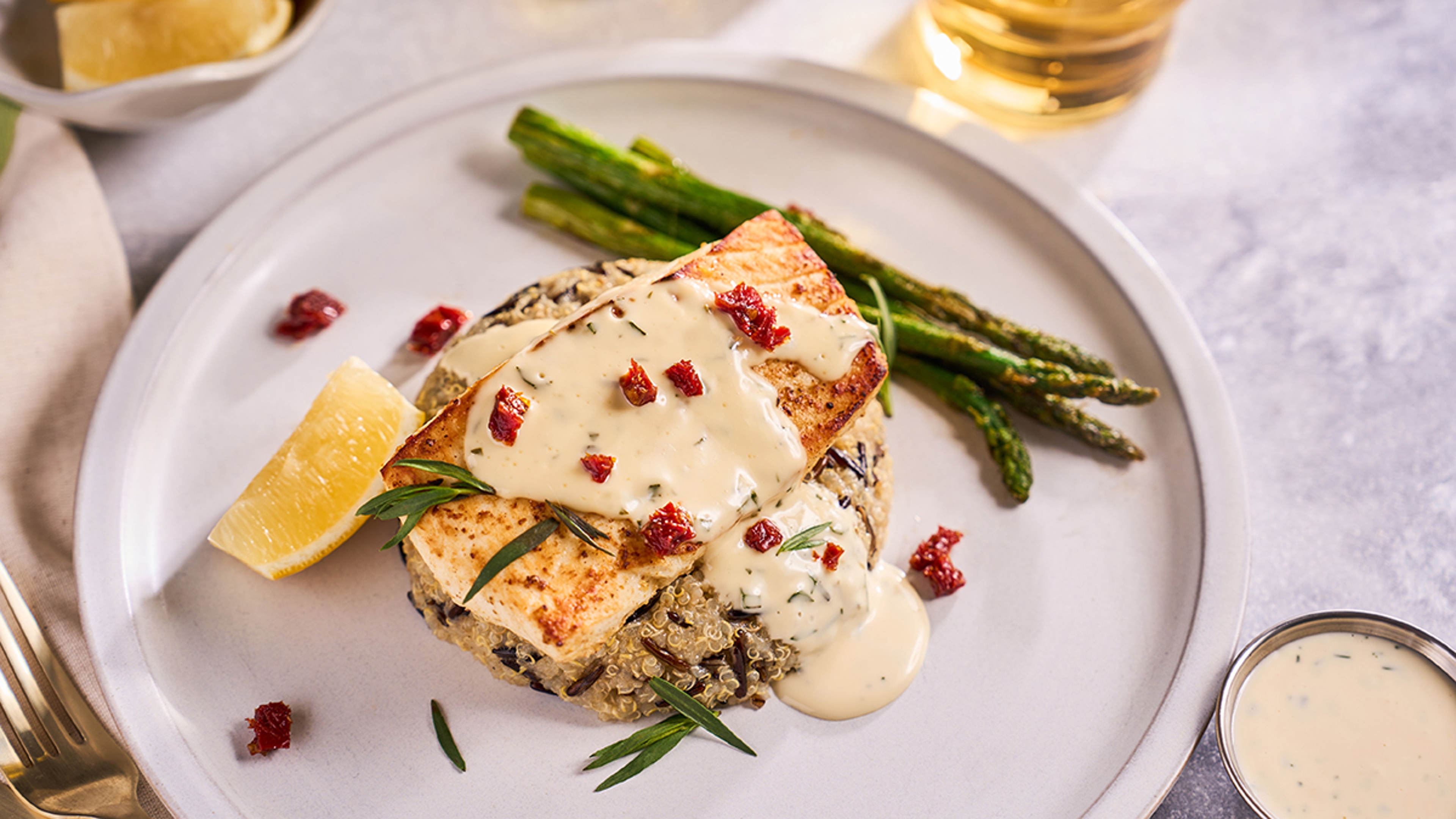
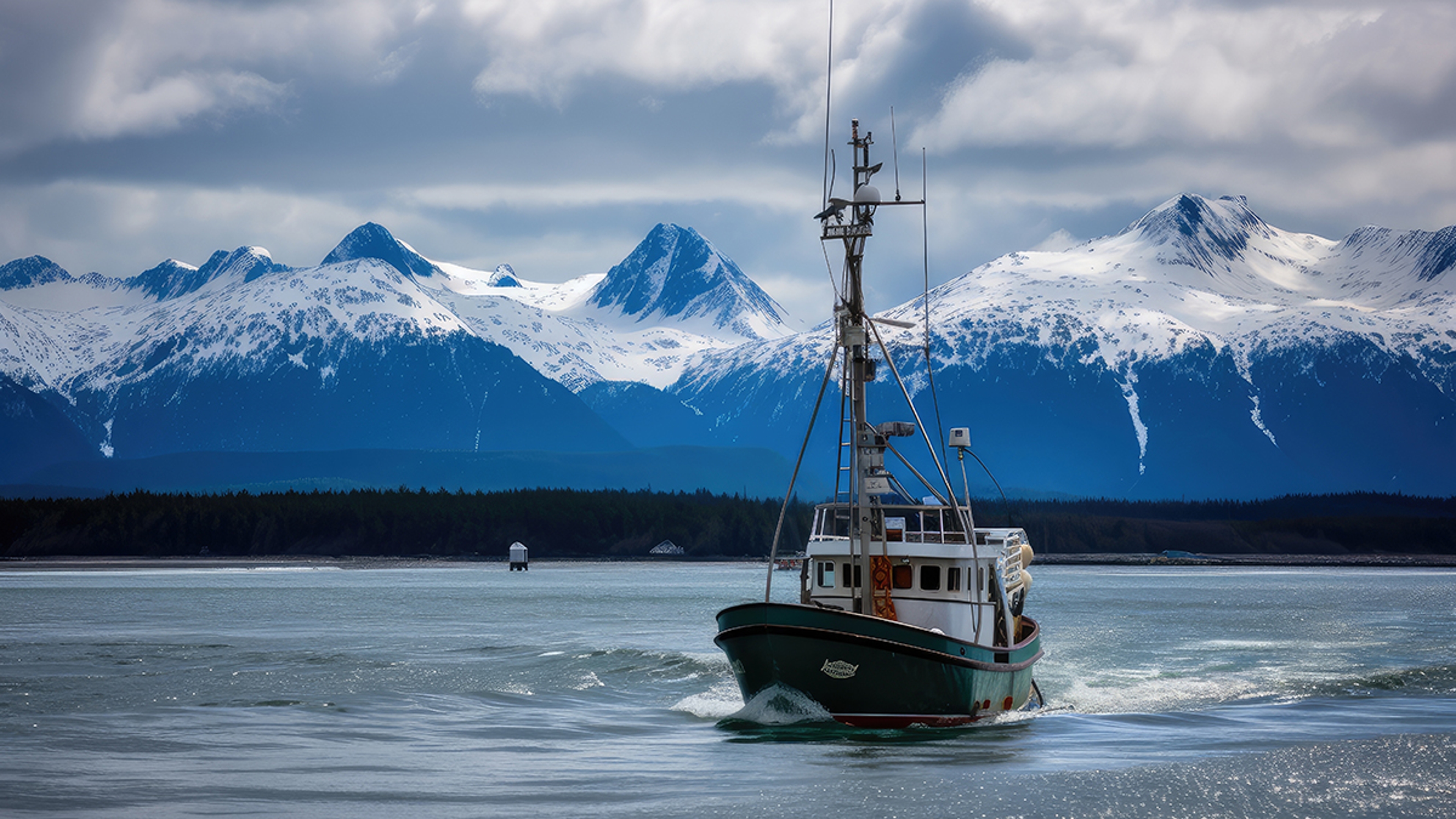
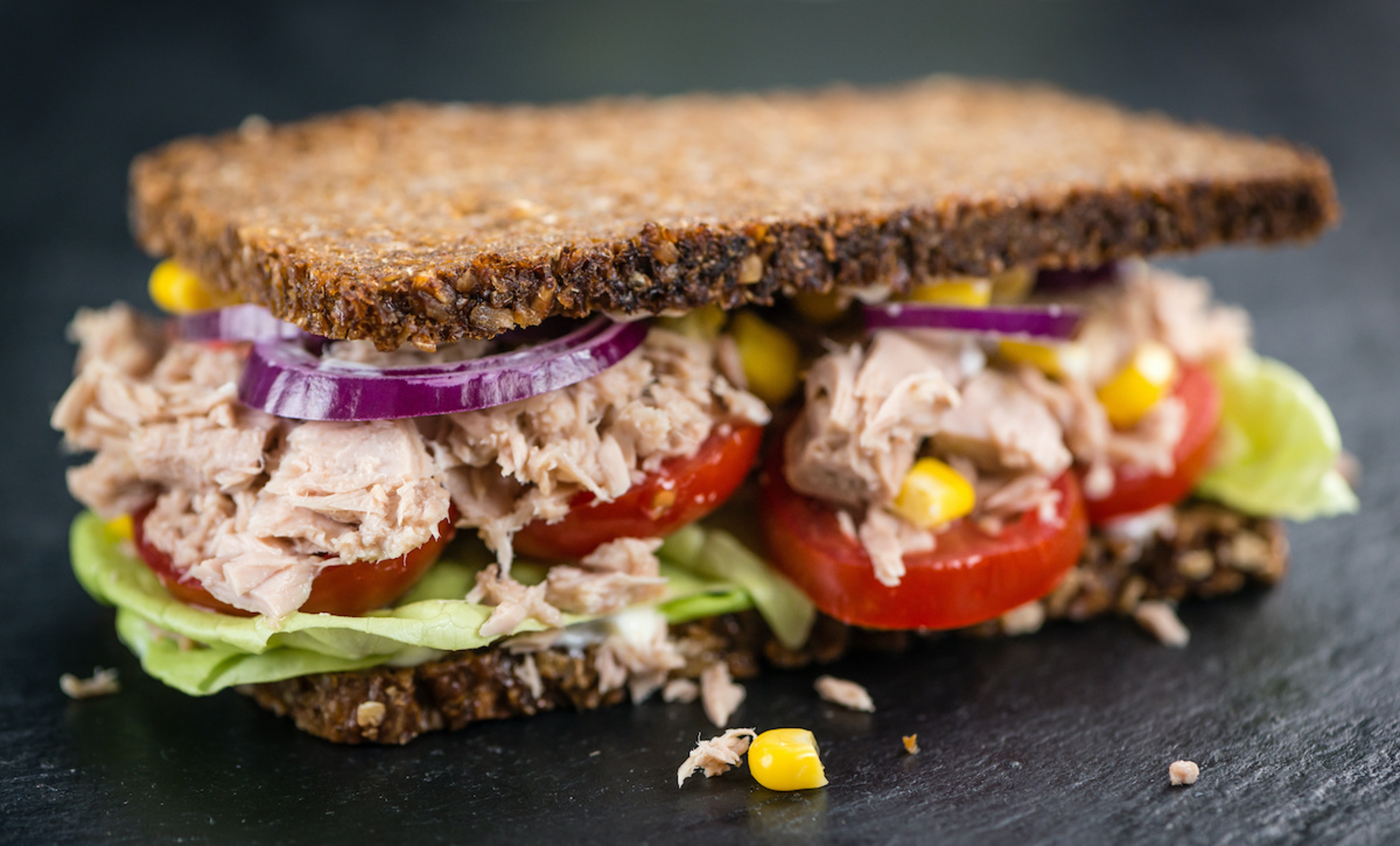
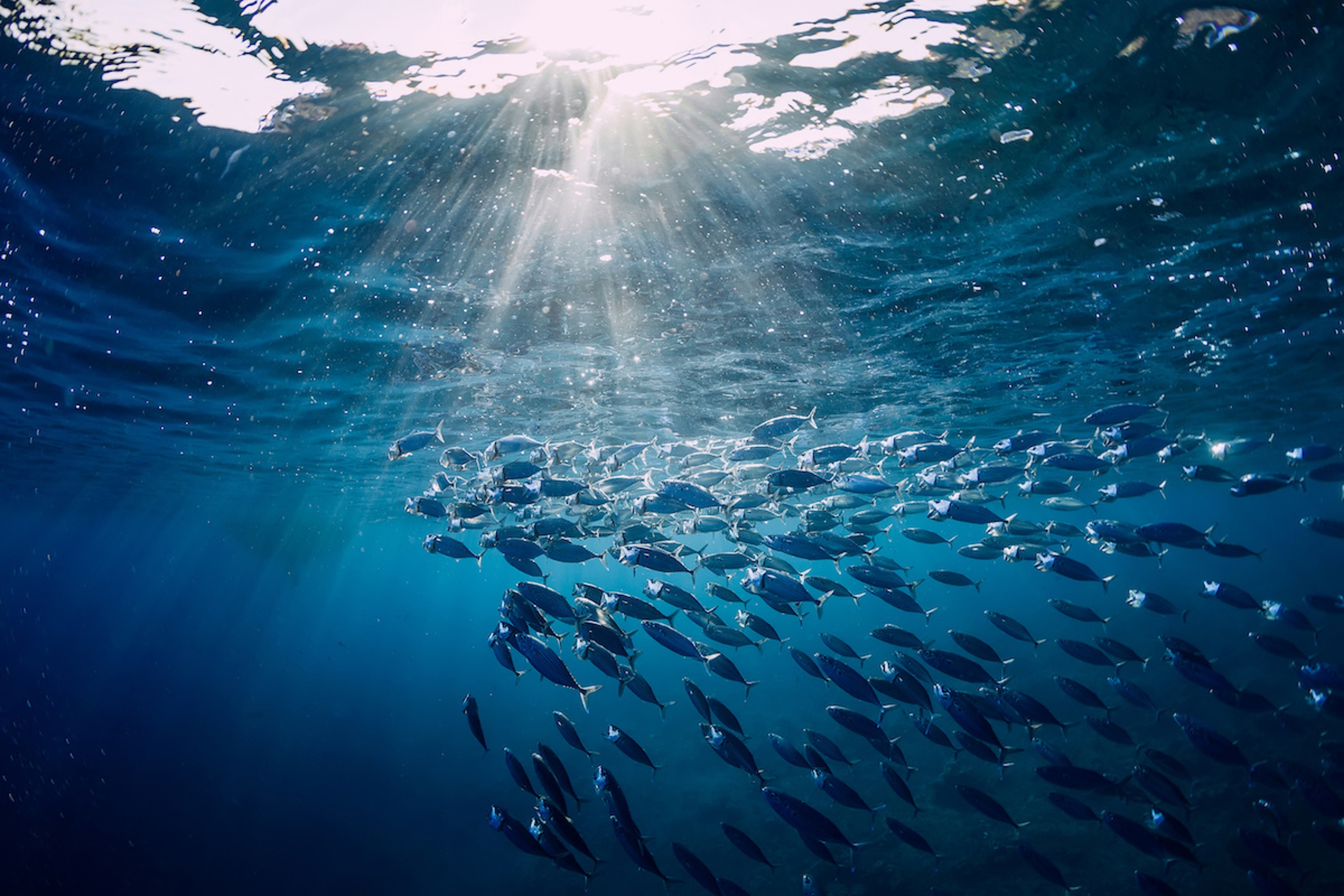
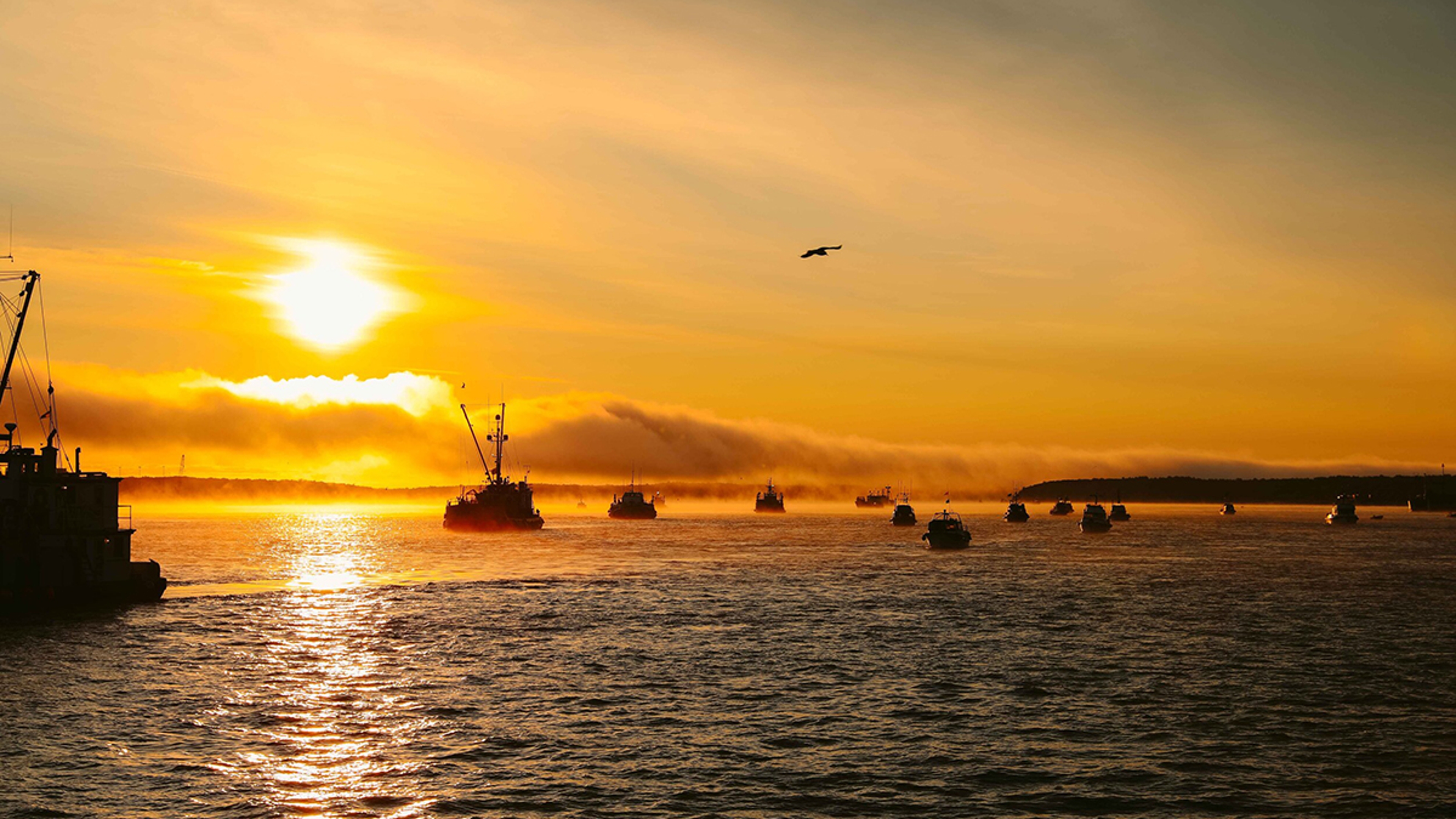


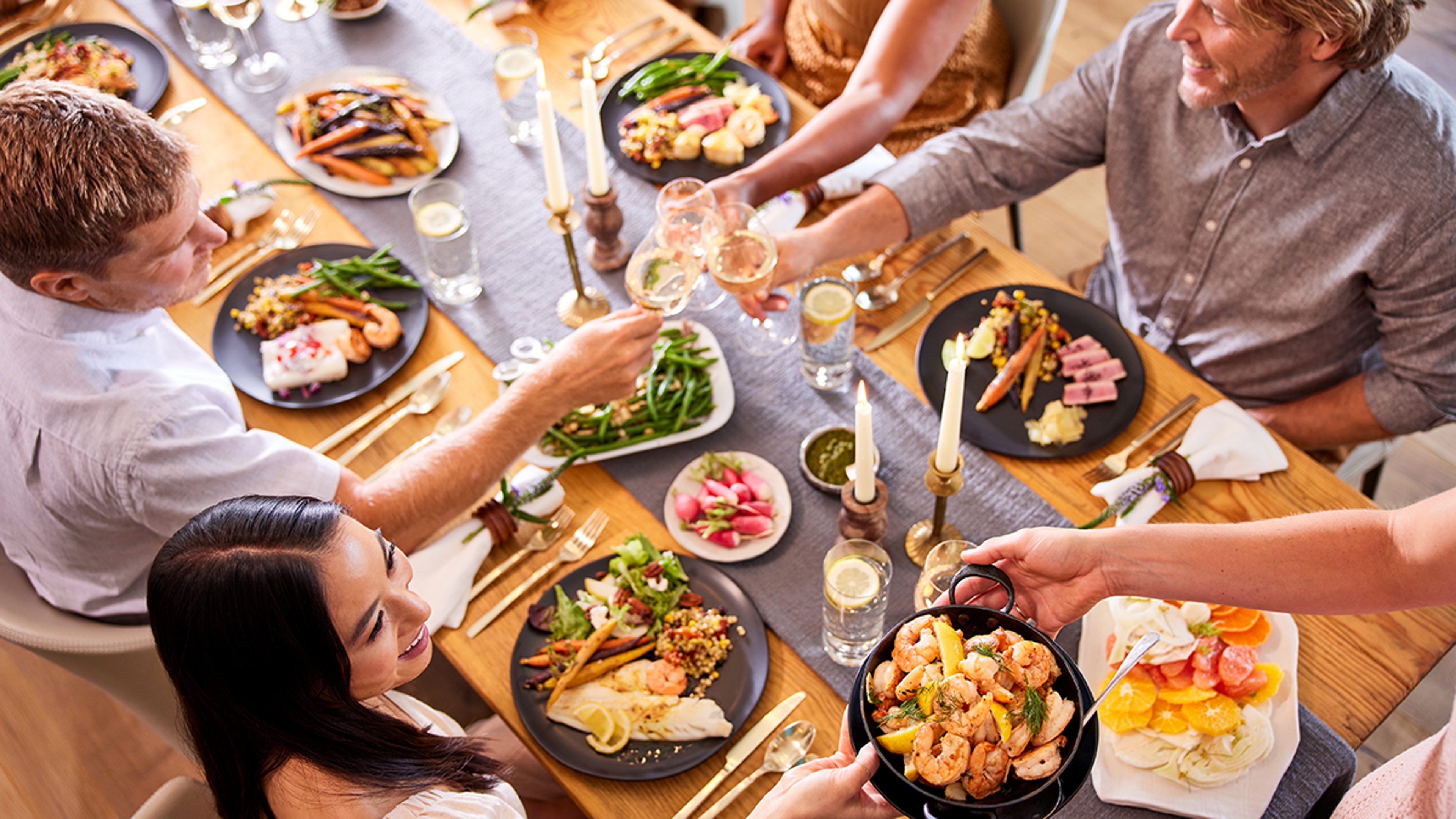





.jpg?q=70&width=3840&auto=webp)


